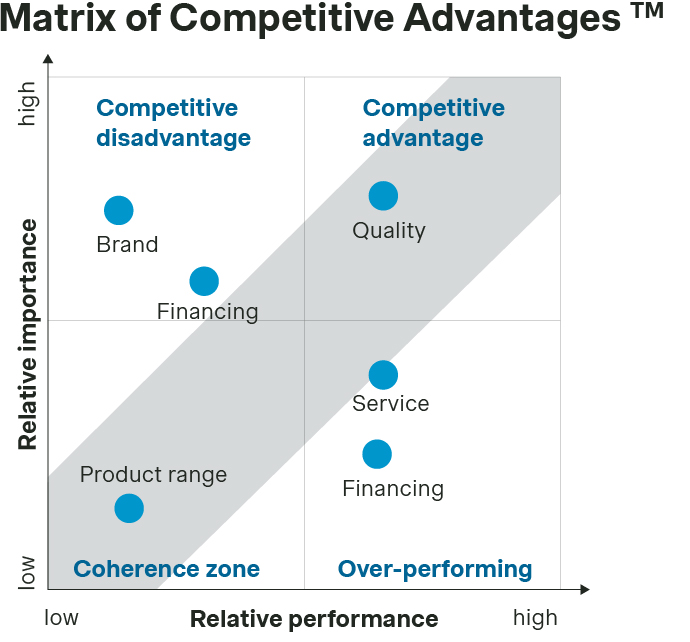Enhance performance with sales negotiation strategies
Sales negotiations can be tricky, but are crucial for business success.
Sales negotiations are where the rubber hits the road. The sales negotiation process involves training techniques, skills, strategies, and tools to improve outcomes. It determines the final terms of the deal and ultimately affects your bottom line. Effective negotiations require attention to detail and strategic planning, ensuring both the buyer and seller reach a mutually beneficial outcome.
Importance of negotiation preparation
Many companies make a critical mistake by diving into price negotiations without adequate preparation. Surprisingly, over 50% of sales teams conduct these vital discussions without the necessary homework to secure better deals. Even more concerning, reps spend an average of only 43 minutes preparing for sales negotiations.
That's far too little, given what's at stake.
Proper preparation involves understanding your customers' needs, researching market conditions, and developing a robust negotiation strategy. When your teams invest time in these areas, they not only build confidence but also set the stage for successful outcomes. Sales negotiation skills training can further enhance these efforts by providing structured programs to improve techniques, build trust, and recognize negotiation tactics.
Remember, if you don’t prepare, you prepare to fail. Is your sales team truly ready for their next negotiation?
In sales negotiations, one size does not fit all. Every deal is unique. To maximize your potential, you need to analyze all the numbers for every account and product.
Imagine your portfolio includes a mix of innovations, commodities, and phase-out products. Quantities, wallet share, and profit margins can significantly differ, and so should your negotiation objectives.
Share of wallet (SOW) is meaningless without a deep understanding of your customer. For innovative products, you might increase SOW from 85% to 100% by enhancing your value proposition. However, with commodities, you might be limited to a 25% share due to customer policies that limit volume to any single supplier. It's essential to understand where you can advocate for higher volume and price increases from the beginning.
Often, sales reps set targets based on gut feelings rather than data. This approach leads to inconsistency, with reps quoting different prices for similar projects.
Gut feelings are rarely optimal. Instead, negotiations are most successful when supported by a realistic yet challenging price guidance system. This system should recommend starting, target, and walk-away prices based on a systematic assessment of your position.
Doing your homework and setting the right targets prepares your sales team for effective sales negotiations.
To ensure your team is setting clear targets for successful outcomes, reach out to Simon-Kucher. We're here to empower your sales team and improve your negotiation strategies. Contact us.
Decision makers are the individuals within an organization who have the authority to approve purchases and make final decisions. It's important to pinpoint these key stakeholders early in the selling process. This way, your sales teams can tailor their approach to address the concerns and priorities of those with the ultimate say.
Negotiations are not just about the dynamics between buyer and seller. You may only interact with the purchaser during the negotiation process, but numerous other individuals impact the final choice. Mapping out the roles and interests before entering the negotiation helps you develop effective sales negotiation techniques.
Most negotiations fail when objectives and sales negotiation strategies are unclear. Even objectives with existing customers can shift. For example, rising cost pressures often mean procurement teams start being measured and rewarded for achieving cost-saving targets. Counterparts that prioritized supply security or the latest product upgrade may now focus on price instead.
Build this understanding and find common ground early on for more productive and focused negotiations.
Looking to build lasting relationships with decision makers during negotiations? Reach out to Simon-Kucher for expert guidance and strategies. Enhance your negotiation skills, build rapport, and establish strong connections with key stakeholders. Contact us.
Buying centers have heavily invested in enhancing their purchasing power, excelling in minimizing product benefits and maximizing competition. They are experts in diminishing the confidence of sales teams, knowing that fear of losing business can lead to lower prices.
Internally, engineers, R&D, and product managers often drive a seller's product communication. But success in negotiations requires understanding value drivers from the customer’s perspective and incorporating them into your value proposition. The best salespeople grasp these concepts early in the sales process. They lay the groundwork well before price negotiations begin.
A powerful tool for this is the Matrix of Competitive Advantages. It allows you to map important factors for your customers and where you outperform competitors. You can highlight these competitive advantages during negotiations.

The matrix also helps you map unimportant factors where you overperform. Here you can improve communication to help customers recognize their importance.
Negotiations often become power plays, with the balance of power varying by customer and deal. A frequent error made by sellers is undervaluing their own leverage. Avoid this trap by quantifying your position and that of your customers.
Take into account clear factors such as potential options, costs of change, immediacy, transaction volume, and reliability of threats. Understand your product’s importance to the customer and the magnitude of substitution risks. Here you can distinguish between the willingness and the ability to switch.
Is the customer willing to take the risk of transitioning to a vendor they've never worked with before? Are they a company that avoids risks or are they open to taking chances? You might find that systematically identifying your balance of power often contradicts your initial gut feeling.
Enhance your company's negotiation strategies and understand the balance of power during negotiations. We provide valuable insights into quantifying your position, identifying leverage points, and maximizing your negotiation power. Contact us.
Having a best alternative to a negotiated agreement (BATNA) is crucial during sales negotiations. BATNA provides a fallback option if current negotiations do not reach a satisfactory conclusion. It gives you leverage and confidence, as you're aware of your alternatives and not reliant on a single negotiation outcome.
BATNA prevents you from accepting unfavorable terms just to close a deal. You can also use it as a strong negotiation tactic to encourage the other party to make concessions. It helps maintain a clear perspective on what constitutes a good sales deal versus a suboptimal one. You negotiate from a position of strength and are prepared to walk away if necessary.
Determine your desired price and work backwards to establish the starting price. The more rounds of negotiation, the higher your opening price should be. Success is often determined not by the size of the deal, but by the level of ambition you bring to the negotiation table.
Establish a walk-away price that everyone agrees on and stick to it. If your walk-away price is $100k, and the customer offers $99k, agreeing to close means $100k was never your true walk-away price. It must be the lowest you’re willing to go, driven by your BATNA and considering variable costs and price contamination.
Run scenario analyses to predict how prices and volumes might evolve. Understand the implications of what a price reduction will mean over time. Recovering margins through additional volume in stagnating or shrinking markets is highly unlikely. Conversely, losing volume can be expensive to regain.
But negotiations don’t always have to be confrontational. Certain components are crucial to all parties involved. Use a concession matrix to map the significance of concessions for you and your clients.
This includes not just quantity and cost, but also aspects such as contract length, transportation contributions, packaging fees, and extra services. If the customer wants to reduce the price, you can also reduce your performance in these areas.
Looking for strategies to defend prices during negotiations? reach out to Simon-Kucher for expert guidance and support. Contact us.
A negotiation strategy is only as good as its communication to the customer. Don't compete on price alone. Sales negotiation playbooks emphasize value-based selling techniques around the unique benefits of your product or service. They provide methods for setting initial offers and framing information persuasively, as well as pre-prepared responses to common objections.
Tactics and techniques
Our sales negotiation playbooks are packed with practical tactics and techniques. These include questioning strategies to uncover customers' needs and pain points, along with effective closing methods like trial and assumptive closes. Concession strategies are also detailed, providing guidelines on when and how to make concessions without undermining the value proposition.
At Simon-Kucher, our playbooks recommend offering concessions as you approach your target price, rather than the walk-away price. This signals that the room for negotiation is getting smaller.
Role-playing scenarios
Practice is a critical component of successful negotiations. Our sales negotiation playbooks include detailed scripts for various negotiation scenarios, helping sales professionals practice and refine their techniques. Simulation exercises allow your teams to role-play with colleagues, gaining practical experience in a controlled environment. Setting up two teams where your sales reps face your own purchasing department can provide realistic and valuable practice.
Performance metrics and analytics
Our sales negotiation playbooks include tools and templates for tracking negotiation outcomes, win rates, and other key performance indicators (KPIs). They also provide processes for collecting and analyzing feedback from clients and team members, facilitating continuous improvement in negotiation strategies. Performance tracking allows for data-driven adjustments, ensuring that negotiation techniques remain effective and up to date.
Sales negotiation case studies and examples
Real-world examples and case studies illustrate best practices and effective strategies in our sales negotiation playbooks. Analysis of past negotiations highlights what worked well and what you could improve, providing valuable lessons for sales teams. This practical insight helps teams understand the application of various strategies and techniques in real negotiation scenarios.
Ready to enhance your team's sales negotiation skills? Reach out to Simon-Kucher for a customized sales negotiation playbook tailored to your specific needs. Contact us.
How we've helped
Transform your sales negotiations with Simon-Kucher
Get in touch
With almost 40 years of experience, we help you prioritize and implement the right commercial growth strategies to outperform market trends. We take a 360 degree approach to understand the behavior and needs of the market, combining our expertise and agile mindset with our client’s knowledge to unlock your sustainable, profitable growth potential and do so at pace.







